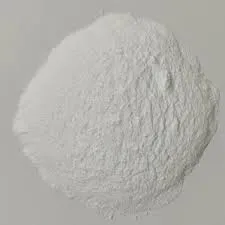Understanding the API Manufacturing Process Steps
Active Pharmaceutical Ingredients (APIs) are vital components in the pharmaceutical industry, representing the core biological or chemical compound that produces the intended therapeutic effect in medications. The manufacturing process of APIs is complex and requires meticulous planning, precise execution, and rigorous quality control to ensure the safety, efficacy, and quality of pharmaceutical products. This article will outline the crucial steps involved in the API manufacturing process.
1. Research and Development (R&D)
The API manufacturing process begins with research and development (R&D). This stage involves identifying the active compound that has the potential to treat a particular disease. R&D includes extensive lab testing, literature reviews, and potentially in vitro and in vivo studies to prove the compound’s efficacy and safety. The generated data guides the subsequent steps, ensuring that the selected compound is suitable for large-scale production.
2. Process Development
Once a promising compound is identified, the next step is process development. This involves designing a scalable manufacturing method that maintains the compound's integrity while maximizing yield. Chemists and engineers work closely to optimize reaction conditions, choose suitable solvents, and implement efficient purification processes. During this phase, various reaction pathways are explored to determine the most effective and cost-efficient method for producing the API.
3. Synthesis
The synthesis phase is crucial to API production. It involves combining raw materials and chemicals in a series of controlled chemical reactions to produce the API. This process often requires multiple steps, including condensation, oxidation, and reduction reactions, each of which must be carefully monitored to ensure consistency and quality. The conditions under which these reactions are conducted, such as temperature, pressure, and pH, are critical for maximizing yield and minimizing impurities.
4. Purification
api manufacturing process steps

Following synthesis, purification is necessary to isolate the API from unwanted byproducts and contaminants. Common purification techniques include recrystallization, chromatography, and distillation. These methods help achieve the desired purity level, which is essential for regulatory compliance and therapeutic effectiveness. The purification phase may require several iterations to ensure that the final product meets stringent quality standards.
5. Quality Control and Testing
Quality control is a crucial step throughout the API manufacturing process and cannot be overlooked. It involves rigorous testing at various stages to ensure the API meets predefined specifications. Analytical techniques such as high-performance liquid chromatography (HPLC), mass spectrometry (MS), and nuclear magnetic resonance (NMR) spectroscopy are employed to assess the API's purity, potency, and stability. Small-scale batches are often produced and tested before full-scale production to validate the process and identify any potential issues.
6. Scale-Up
Once the API has been synthesized and tested successfully, the focus shifts to scale-up, which translates the lab-scale processes to industrial scale. This step requires careful consideration of equipment, safety protocols, and environmental impacts. Engineers and production managers must ensure that the scaled-up process maintains consistency and quality while optimizing efficiency and output. A successful scale-up can significantly reduce manufacturing costs and accelerate market entry.
7. Regulatory Compliance
Finally, the API manufacturing process must adhere to stringent regulatory standards set by health authorities, such as the FDA in the United States or EMA in Europe. Manufacturers are required to maintain comprehensive documentation throughout the production process, ensuring traceability and accountability. An approved API is vital for drug registration and commercialization, involving audits and inspections by regulatory bodies.
Conclusion
The API manufacturing process is intricate, involving numerous defined steps to ensure the safe and effective production of pharmaceuticals. From R&D to regulatory compliance, each phase plays a critical role in developing quality APIs that meet stringent industry standards. As technology and methodologies evolve, the focus remains on enhancing the efficiency of API production while upholding standards of safety and efficacy in drug development.

